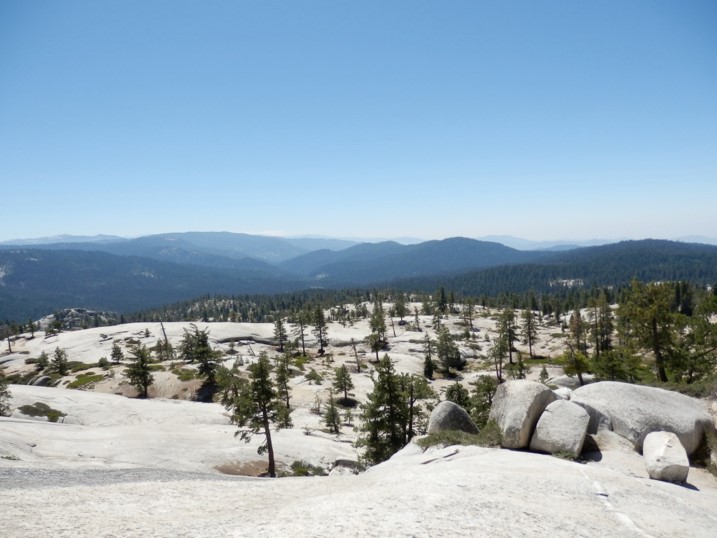World's Largest Trees Help Explain California Forests' Bald Spots

Trees in California's Sierra Nevada mountains, including giant sequoias, need sunlight, water and just the right kind of granite to grow, a new study finds.
The findings help explain the surprisingly patchy growth patterns in one of the most productive forests in the world. Visitors to the western Sierra's lower elevations may find themselves abruptly stepping from a lush redwood grove onto sun-lashed bedrock.
"Bedrock can be just as strong as climate in controlling where vegetation does and doesn't appear in the Sierra Nevada," said Jesse Hahm, a geologist at the University of Wyoming and lead study author. "These trees have had thousands and thousands of years to colonize this elevation band in the western Sierra, and the fact they have not done so already suggests there's something about the bedrock," influencing the growth patterns, Hahm said.
The findings also revealed that the soil-covered forest groves were eroding more quickly than nearby bare granite. This suggests the soil is speeding up the weathering processes that wear down the rock.
Plugs of rock
The new research may not surprise anyone with a green thumb. Gardeners know plants require the right combination of soil nutrients, such as nitrogen and phosphorus, to thrive.
But until now, scientists didn't realize how strongly rock type controlled forest growth patterns in the Sierras. Though the mountains may look like one massive granite blob, sharp boundaries mark chemical variations within the range. It turns out that even California's famed giant sequoias, the largest living trees on Earth, grow only in soil topping rocks with the right chemical composition, according to the study, published today (Feb. 10) in the journal Proceedings of the National Academy of Sciences. [Nature’s Giants: Tallest Trees on Earth]
Get the world’s most fascinating discoveries delivered straight to your inbox.
"Subtle differences in geochemistry that arose more than 100 million years ago are now affecting life on the mountain range," said Hahm.
Long ago, the molten rock that formed the Sierra Nevada granite was the feeder system for a massive volcanic mountain chain similar to the Andes in South America. The granite's chemical boundaries mark different plutons, or plugs of magma that cooled underground. Each pluton has a slightly different chemical composition. The plutons have been brought to the surface by millions of years of erosion, along with uplift from tectonic forces at the boundary between the North American and Pacific plates.
Hahm and his co-authors linked the pluton boundaries to the Sierra's patchy forest cover by comparing satellite forest cover data with geologic maps and collecting hundreds of rock samples. They focused on the western Sierra between about 6,000 and 8,000 feet (1,800 and 2,400 meters) above sea level, where glaciers did not remove soil during the last ice age.
Shifting climate
While temperature and precipitation are still important factors in controlling the elevation at which the western Sierra's trees grow, the scientists showed that the plutons caused the starts and stops in the forest network.
"What was shocking was that within an area of similar climate, the forest varied wildly," Hahm said. "A natural grove of sequoia was right next door to almost nothing at all."
One key ingredient in the forest patterns was phosphorus, which varied widely between plutons. In some cases, the trees revealed fine-scale pluton boundaries overlooked by earlier geologic mappers, Hahm said.
The "Goldilocks" zone inhabited by western Sierra forests is predicted to move to higher elevations in the coming centuries, as climate change shifts California's temperature and precipitation bands. The new study suggests the trees will also march upward according to where they find the best food.
"As the forests move under changing climate, they will also be restricted by rock type," Hahm said.
Email Becky Oskin or follow her @beckyoskin. Follow us @livescience, Facebook & Google+. Original article on Live Science.

